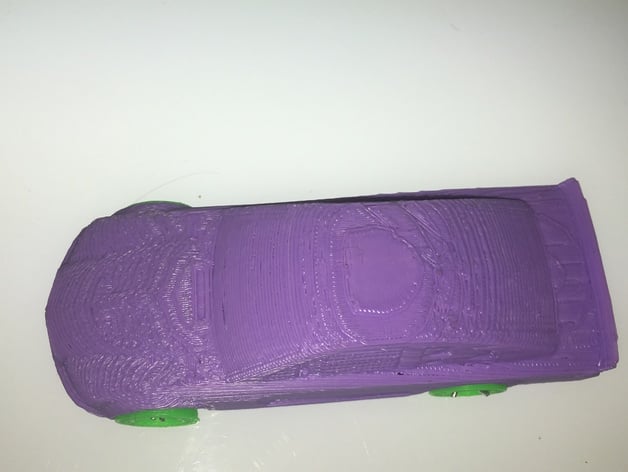
Energy Conservation Lab - 3D Printed Car
thingiverse
Project #1 - Energy Conservation This project involves utilizing a 3D printed car to test and confirm the Law of Energy Conservation. The 3D model utilized is borrowed from user PetroPixel https://www.thingiverse.com/thing:1642619. Print Settings Printer: Flashforge 3D Creator Pro Rafts: Yes Supports: Yes Resolution: .27 Infill: 15% Notes: The car and parts can be scaled down based on what is needed/desired. Post-Printing Scaled down model. Attached wheels with paperclips. How I Designed This I utilized SketchUp to rescale the car files (body, pins, wheels) and utilized the slicing software Replicator G to create the 3D file to print it. Overview and Background Students in a physics/physical science setting will engage in a lab activity involving a 3D printed car. Students will use the lab environment to drop a measured mass (the car) down a specific height (utilize a ruler/tape measure to find desk height) to calculate potential energy. Students will be able to calculate kinetic energy by utilizing the other variables in conjunction with velocity (calculated with timer and distance). They will fill out data on the accompanying worksheet. Objectives: Students will be utilizing a physical system to test and confirm the Law of Conservation of Energy. Skills Learned (Standards): HS-PS3-2. Develop and use models to illustrate that energy at the macroscopic scale can be accounted for as a combination of energy associated with the motions of particles (objects) and energy associated with the relative positions of particles (objects). Lesson Plan and Activity Step 1: Debrief class on lab activity. Step 2: Pass out worksheet Step 3: Establish groups (3-4) Step 4: Pass out 3D Printed Cars (fully assembled) Step 5: Have students mass their cars Step 6: Have students measure the height of their lab tables Step 7: Begin the lab by having students slide cars over their tables Step 8: Have students time the car until impact with the ground; measure horizontal distance. Step 9: Have students take accurate measurements until data is consistent (3 tries is usually enough) Step 10: Have students calculate potential energy & kinetic energy of their car drops (can be assisted by teacher with calculations) Step 11: Finish worksheets Step 12: Debrief Lab activity (go over lab worksheet and discuss general findings/trends) Duration of Lesson 1 hour lab Preparation The teacher MUST PRE-PRINT all the car materials and assemble them prior to the lab (1 car per 4 students)Lab areaAt least two groups (to compare data)ScalesTimer (phone apps can work too!)Meter stick/Tape measure *knowledge of kinetic energy and potential energy Rubric and Assessment As a rule for evaluating students for this activity, one way is utilizing a 4 point scale. See the attachment below for details. References http://www.nextgenscience.org/pe/hs-ps3-2-energy
With this file you will be able to print Energy Conservation Lab - 3D Printed Car with your 3D printer. Click on the button and save the file on your computer to work, edit or customize your design. You can also find more 3D designs for printers on Energy Conservation Lab - 3D Printed Car.
